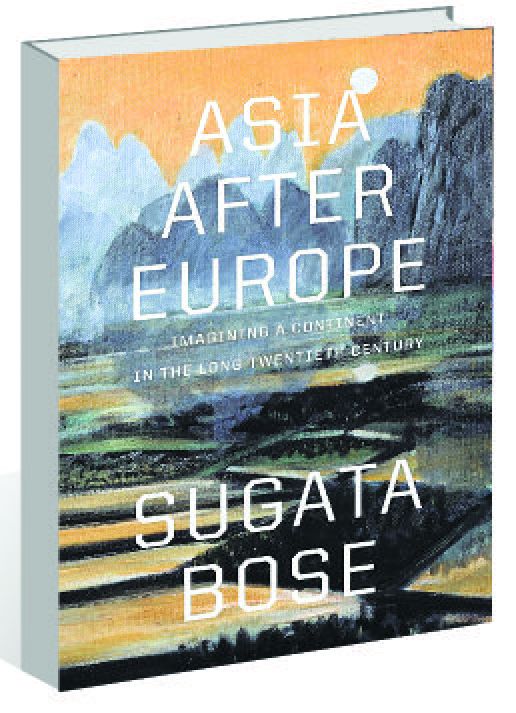Asia After Europe by Sugata Bose. Harvard University Press. Pages 275. Rs 699
Book Title: Asia After Europe
Author: Sugata Bose
Shyam Saran
It is fortuitous that I am reviewing Harvard professor Sugata Bose’s latest book, ‘Asia After Europe’, soon after attending a fascinating international conference on the theme, ‘Asia on the Move’. Eminent scholars gathered for the conference from several countries of Asia to determine whether Asia was an artificial construct bequeathed by Europe, or did the history and culture of Asia entitle it to claim a shared identity. The answer was in the affirmative, looking at Asia as a space traversed through its long history by traders, pilgrims, adventurers and invaders, whose myriad encounters created, over time, a deeper affinity co-existing with immense plurality and diversity. These inter-connections were overlaid and often interrupted by the succeeding European imperialist and colonial systems during the 18th to the 20th centuries.
Bose’s book focuses on the history of a group of extraordinary Asian intellectuals who played a seminal role in reviving the idea of Asia as a distinct civilisational zone, with shared values and sensibilities, very different from Europe. The author recounts in a most vivid and readable style the history of the “intellectual, cultural and political conversations across Asia” among those who “challenged European colonial domination to dream of the futurism of young Asia”. In its seven chapters, the book traces the history of how Asia confronted the challenge of western domination and its brand of modernity.
There was, like in Meji Japan, a wholesale embrace of western tools of economic transformation and even the outward adoption of western costumes as a marker of modern “civilisation”. But there was also a harking back to a remembered and shared spirituality, distinct from and superior to western materialism. Pan-Asianism was born out of this, with Buddhism playing the role of a universalising carrier. Towering intellectuals like Rabindranath Tagore from India, Okakura Tenshin from Japan and Liang Qichao from China sought other sources of Asian revival. But the importance of Bose’s rigorously researched book lies in the pioneering exploration of the literary and artistic streams which flowed back and forth in the Asian space, leading to the flowering of new and exciting idioms in painting, sculpture, poetry and literature drawing from Japanese, Indian and Chinese traditions.
Tagore’s nephew Abanindranath Tagore learnt Japanese wash painting techniques and this influence may be seen in his painting of Bharat Mata, which became the banner of the nationalist movement. The famous Chinese painter, Xu Beihong, spent time in Santiniketan and his early oil paintings cover themes from the Indian landscape. Later, he switched again to monochrome ink paintings in traditional Chinese style. The series of paintings of horses in ink inspired a young Husain, who was visiting China in the early 1950s, and this influence may be seen in several of the latter’s celebrated paintings of horses.
The role of Japan is interesting. It was the first Asian country to industrialise in the western manner and was also the first to defeat a western power, Russia, in 1905. This was a great event for the colonised countries of Asia, who took inspiration from Japan’s success. Tokyo became a magnet for political exiles, intellectuals and eager students from several Asian countries, including India. This is where many conversations took place among Asians re-connecting with each other. The Japanese state had little to do with this and often put up barriers for diplomatic reasons. It embraced imperial ambitions and sought colonies like the imperial powers. Its vision of a renewed Asia was a continent under its tutelage — the Co-Prosperity Sphere. The author’s quote from Tagore is most telling: “Once I went out to eastern Asia to welcome there the birth of the new spirit of humanity. There in the eastern-most sky of Asia was fluttering the triumphant banner of Japan, encouraging new hope in the heart of Asia. I experienced joy, yet my mind was deeply disturbed.”
The post-Second World War period led to a historic process of de-colonisation and India was in its forefront. There were other attempts to create a platform for Asian re-connection and revival. As Bose points out, the Asian Relations Conference convened by Nehru in 1947 was one such initiative, but was still statist in conception. It did not have an enduring effect. Other initiatives which sought to create a people’s solidarity across Asia, Africa and Latin America blossomed for a while and then faded as the West under US hegemony created news forms of domination and control. The Bandung Conference in 1955 tried to bridge the Cold War divide but eventually, Asian countries drifted apart and the India-China war of 1962 put an end to the expectation that these two largest and civilisational states of Asia would lead its resurgence. National borders became more hard and forbidding than the colonial boundaries of old, which still allowed traffic of people and ideas to flourish.
In the concluding section, Bose looks at Asia in the age of contemporary globalisation. There is no doubt that the centre of gravity of economic power and influence has moved steadily towards the east. The spectacular rise of China has tilted the balance, perhaps irrevocably, towards Asia. Ominously, however, the “presumptive” leader of Asia, China, like Japan before it, has a hierarchical vision for the continent, suffused with a familiar triumphalism which dims the humanistic vision of the intellectual giants of the long century. But as a latter-day traveller across Asia, Bose discovers that the sense of familiarity amongst the diverse people of Asia is still alive and palpable. Perhaps waiting for sentinels of a new age to re-ignite the old, elevated sensibilities. He could have added the role of Bollywood and more recently of K-Pop in nurturing a latter-day pop-culture affinity.
This is an important book for anyone interested in the future of Asia.














